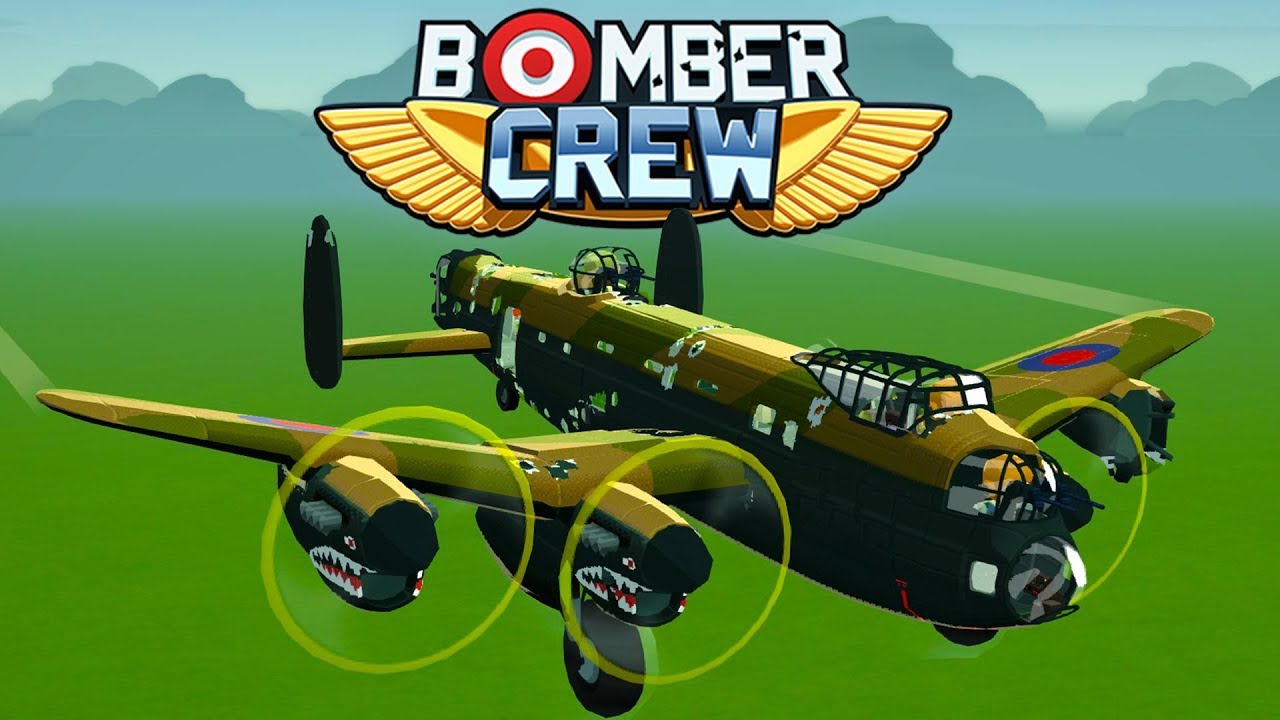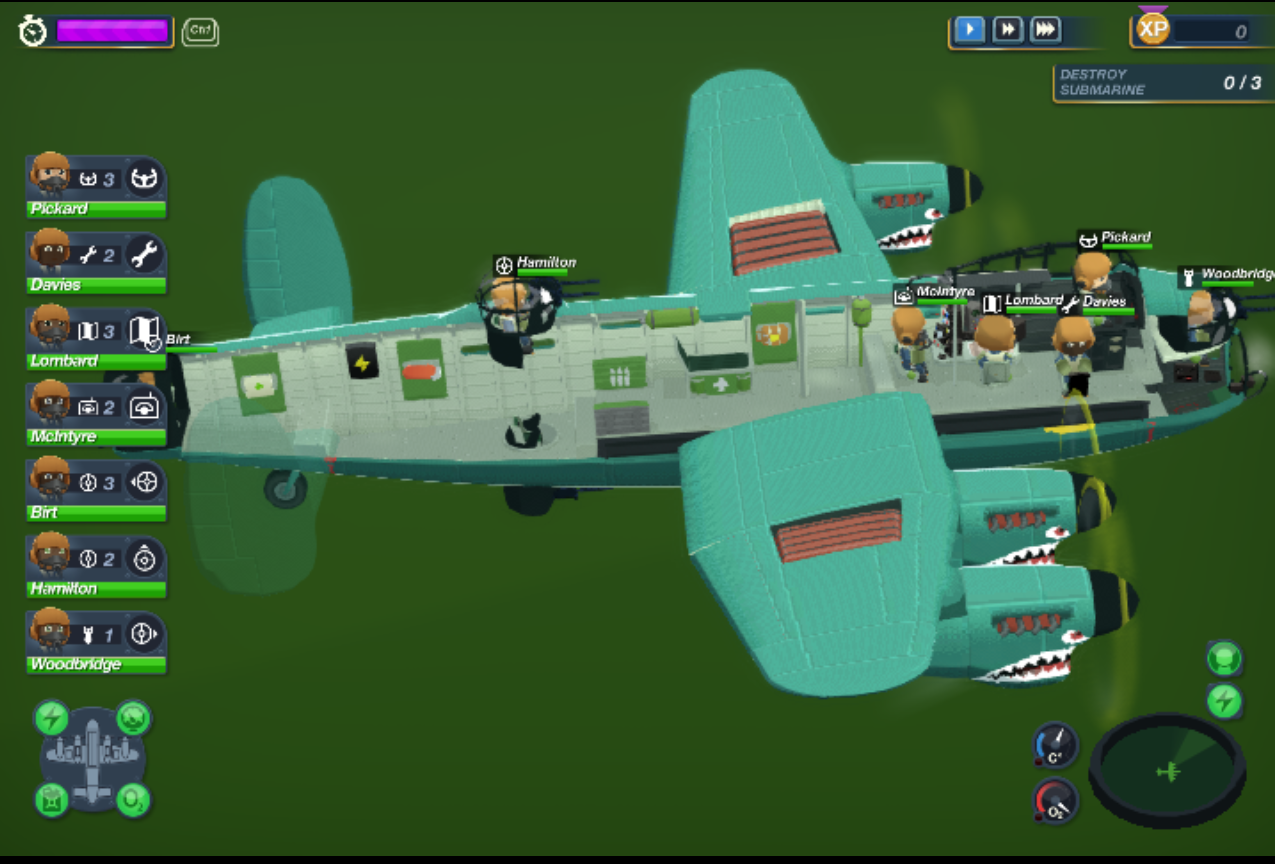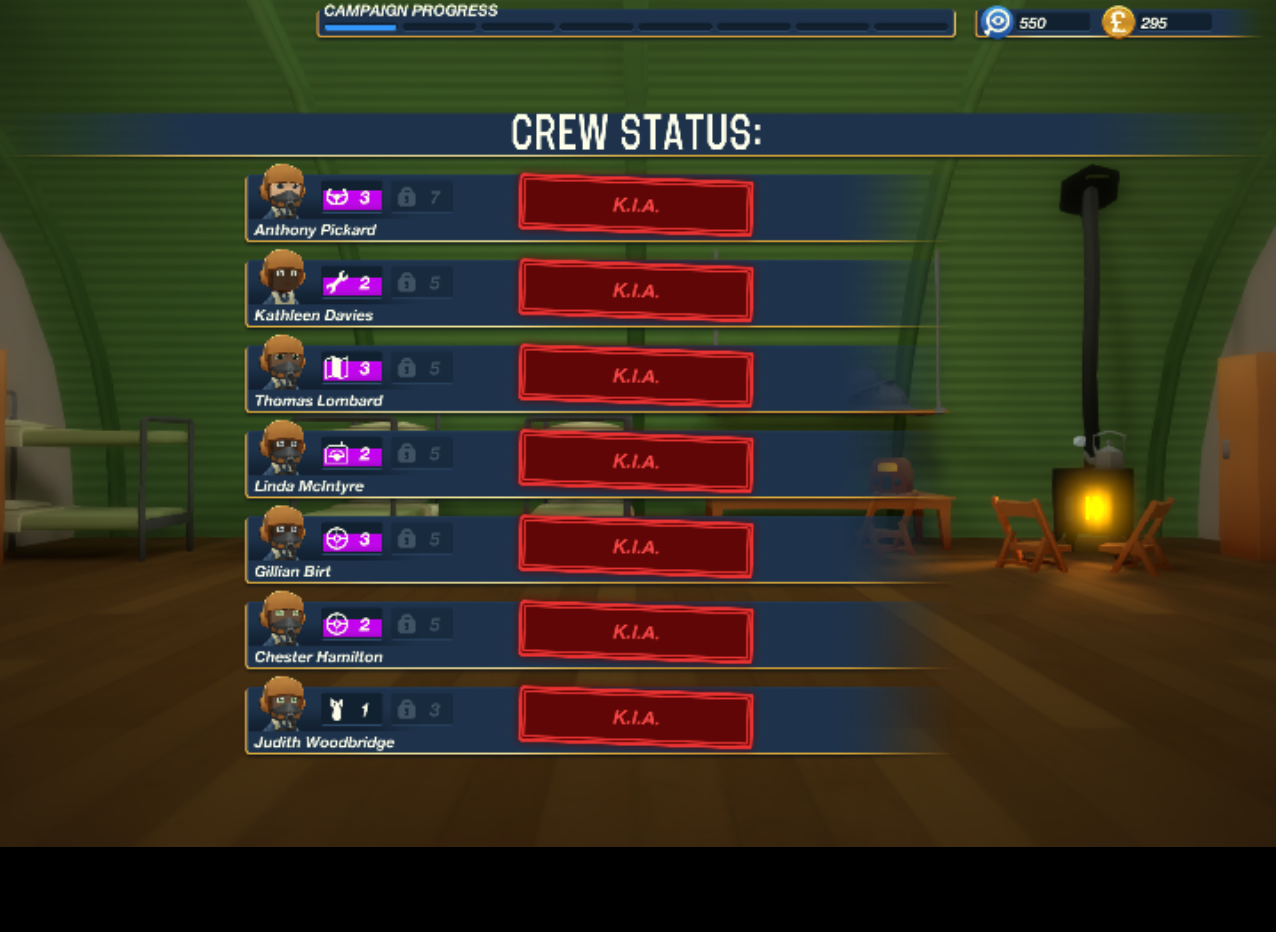Runner Duck’s World War II-era strategy game Bomber Crew offers a unique chance to take almost complete control of some fictitious British bombing operations, as you manage your crew and outfit your plane to ensure your success. The game provides a good challenge on its own, and the way the mechanics work overall mean you’ll always want to try the next mission, no matter how badly the last one turned out. Yet it’s not perfect, and the flaws in the game’s individual components mean that you won’t finish your campaign without a great deal of unnecessary frustration.
Gameplay
As you might have gathered from the title, Bomber Crew puts you in control of a Lancaster Bomber and its crew as you carry out various missions for the RAF during World War II. The missions vary from simple bombing runs, to rescuing stranded soldiers, and everything in between. On top of that, there are multiple side quests and the opportunity to take on bounty requests and destroy certain enemy Aces. You’ll receive cash and intel points for successfully completing your missions and an additional reward for returning back to base in one piece (which is more of a challenge than it may sound), and you’ll use those rewards to purchase upgrades for your crew and plane.
Getting to Know Your Crew and Plane
However, the heart of the game is in actually managing the crew and the plane. You’ll start out by recruiting new members from a procedurally generated pool of rookies, male and female in all colors. It completely flies in the face of historical accuracy, but in doing so, it also is a subtle way to make the player think, “why shouldn’t it have been like this anyway?” Each potential recruit has their own stat sets. In the beginning, you’ll probably ignore everything except speed and armor, though survival capabilities and oxygen boosts become more important as the game progresses.
Each crew members starts at level 1, and they unlock important skills as they progress–things like using less fuel or pulling off more accurate attacks. You don’t actually get to see what the skills are until they unlock, though. There are also fun little biographical details about each recruit’s former occupation. They don’t have any effect on the crew member’s abilities, but it’s a cute way to make for a more immersive experience by reminding you of the nature of Britain’s military forces at the start of the war.
You can’t do much at first as far as outfitting your crew or upgrading your plane, but after a few successful missions, the upgrades start pouring in. Some are purely aesthetic, like different colored jackets, but others—especially with the plane—significantly boost your chances for success and survival. You’ll want to survive, too, since failure is brutal. Replacing dead crew members means starting back at level 1—until later in the game, at least—with no skills, and if your plane gets destroyed, you’ll have to re-purchase your upgrades too. Everything is pretty expensive, but between rewards and side missions, money never ends up being a problem.
Mission (Almost) Impossible
During the mission you are responsible for almost every action the crew must take, including simple things like raising landing gear and opening bay doors, as well as outfitting everyone with parachutes and providing extra stores of ammo for your gunners. This is where the game is at its most enjoyable and most frustrating.
If crew are in their proper positions, they perform their duties as they should. If not, then they just stand around waiting to be told what to do, even if it means no one is at the wheel or the oxygen system malfunctioned and needs repairing. It’s not always easy to select the right member and send them to the right place either. Given the closeness of everything inside the plane, you’re as likely to send your engineer to one of the gun turrets as you are to have him or her fix the hydraulics system.
The other problem is with movement speed. Everything else, including your enemies, moves at a fairly reasonable pace. Yet your crew members take a good 40 seconds to pick up some ammo and take it to the tail gun. Equipment can negatively affect movement speed too, which is a bit silly. I don’t know about you, but I can’t recall the last time it took me an extra five seconds to get across the room just because I was wearing leather boots. No one expects video games to be entirely realistic, but the gap between the rest of the game’s pace and your crew’s slothful speed is jarring. It makes for a greater challenge, certainly, but it’s an artificial challenge.
Fortunately, your reputation won’t affect the abilities or willingness of your new recruits.
One of the most awkward mechanics, however, is the tagging system. You enter a first-person mode by pressing the spacebar and search for navigation points, mission targets, and enemy fighters. If the first two aren’t tagged, you just keep flying towards the horizon. If you don’t tag a fighter, your gunners just sit there and watch as your plane gets shot to bits. In some of the less hectic missions, it’s fairly easy to keep up with tagging, although the cursor movement is far too sensitive to make it a smooth process. In missions where you must balance a variety of objectives at once, it becomes a bit too difficult to keep up with tagging enemies while still managing everything else.
That’s part of the challenge, of course, and it gets easier as you get used to things, but the over-sensitivity of the cursor and the fact that it takes a good five seconds to tag an enemy fighter makes it more difficult than it needs to be. Then there is target tagging. I never quite figured out whether it was my own fault for re-tagging a target too soon after missing it or if the plane’s unalterable automatic course is just wonky sometimes, but there are occasions when, despite having everything lined up the best you can, the bombing sites just don’t line up with your target, especially if the target happens to be small.
And Yet…
This all likely makes the game sound dreadful. When it works, though, it works very well. And regardless of how tempted you are to quit after informing your computer in no uncertain terms that it wasn’t your fault the plane crashed, there’s always the drive to do better next time, to outfit your plane this way instead, or to make sure to take out all the fighters before going anywhere near those ground instalments (which you can’t target). The game’s individual parts might be lacking in several respects, but the whole is, overall, worth the trouble, not least due to the satisfaction received from successfully completing a mission and leveling up your crew. What it really needs is a training mode, where you can practice maneuvers and get used to the way things work before destroying your entire crew during a mission.
Audio and Visuals
Visually, the game is charming, if sometimes a bit too uniform. The graphics take a minimalist approach, overlooking textures and details and relying on smooth, somewhat blocky designs with bright colors to give it a unique and appealing aesthetic. The visuals aren’t really the main focus, though, so even though one ammunition dump or recon spot looks exactly the same as every other one you’ll see throughout the game, it doesn’t take away too much from the enjoyment. An added bonus is the fact that you can set the graphics to the lowest setting possible if you need a smoother gameplay experience, and there aren’t any drastically negative effects.
The sound does its job well. Your missions begin accompanied by a military drum beat, though in the heat of things, you’ll only be hearing gunfire and the unintelligible chattering noise of your crew when they have to pass a message on. At base, it’s a different story, where you’re treated to some muffled and vague 1940s music as your background, except in the briefing room.
The Verdict
Bomber Crew is an interesting game. Its core mechanics mesh well together, but they can be incredibly frustrating to work with. The learning curve is very steep, making the absence of a training mode painfully noticeable. At the end of the day, though, the charming presentation and the desire to give it just one more go are enough to recommend the game, with the qualifier that you will get annoyed with it often at first.
If you do pick the game up, be sure to check out our guide to getting started in Bomber Crew as well!












Published: Nov 6, 2017 02:32 pm